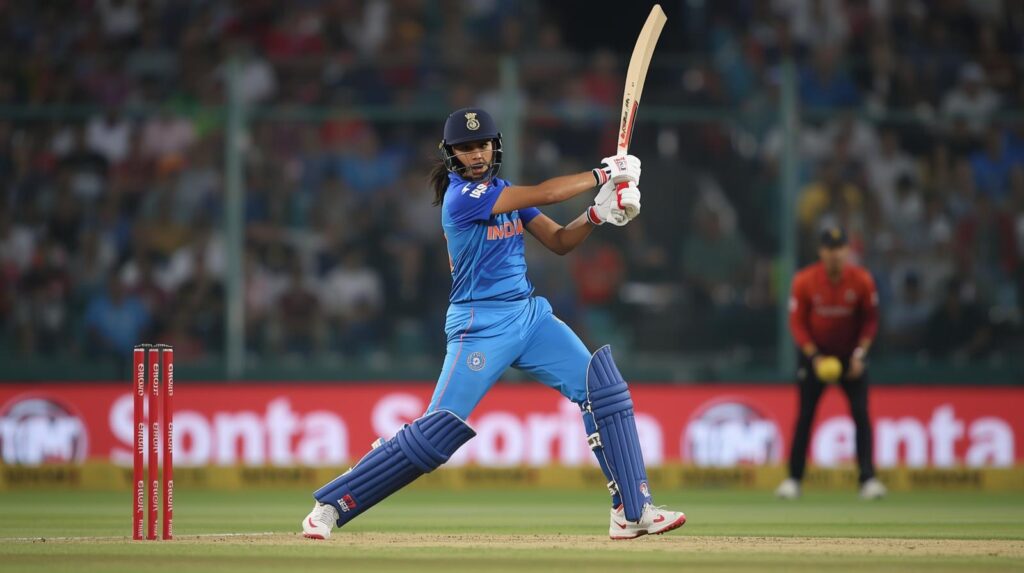
The lights at ACA-VDCA in Visakhapatnam felt unusually close that night, the kind that makes even casual spectators suddenly listen. Smriti Mandhana and Pratika Rawal walked out to open, and the hush around the stadium carried a strange certainty — not of an easy win, but of something precise being about to happen.
They didn’t merely compile runs; they wrote a shared language of timing, running and intention. By the end of the innings the scoreboard displayed two headlines that will be quoted for seasons: a record opening partnership for India in women’s ODIs and Smriti Mandhana reaching 5,000 ODI runs — the fastest Indian woman to that landmark. Those numbers matter, but the scene around them mattered more: field placements shifted, bowlers altered their plans and a tournament’s psychology quietly changed.
“They didn’t just score; they made the game play to their pulse.” — match analyst (paraphrase)
If you watched the partnership unfold, you would have noticed the quiet rituals that build big stands: the eye contact before a quick single, the soft call and answer between crease and deep square, the tiny retreats into defense that were immediately followed by decisive acceleration. Mandhana’s drives found the gaps; Rawal’s rotations kept the scoreboard humming. Together they turned the new ball hours into scoring windows and denied Australia the rhythm they rely on.
This wasn’t an overnight miracle. The Mandhana–Rawal partnership is the product of two years of calibration. From tentative pairings in 2023 to consistent 50-plus stands through 2024–25, they have slowly moved from possibility to expectation. Coaches tested roles; domestic runs built confidence; quiet sessions turned into instinct. When they met under Visakhapatnam’s lights, they brought that bank of shared moments with them.
Moments that turned the game
- Powerplay posture: Mandhana punished width, Rawal rotated strike — powerplay became scoring window.
- 20–30 pivot: Well-timed boundaries forced bowling changes; Australia tried to fracture rhythm with short spells and spin.
- Running as pressure: Quick singles denied the field time to reset and kept bowlers from settling into long, probing lines.
Each small choice compounded. Where brittle partnerships die on a single loose ball, this one absorbed, rebalanced, and accelerated. The tactical lesson for opposing captains is clear: manufacture doubt early — disguise pace, try spin sooner, and be willing to risk a few boundaries to stop comfortable accumulation.
“A big opening stand doesn’t just add runs — it makes the opposition rearrange their plans.” — former player (paraphrase)
Beyond match strategy, the human effect is immediate. Mandhana’s 5,000th run becomes a metric for young batters dreaming in nets; Rawal’s composed innings becomes a coaching example for how to build innings without theatrics. For selectors, too, consistency at the top simplifies choices: when openers deliver with regularity, you can specialise the middle order with greater confidence.
What could this change in the tournament
A dependable opening platform affects more than one match. It helps post imposing totals, protects net run rate — a silent tiebreaker in group stages — and allows captains to adopt bolder tactics. If Mandhana & Rawal reproduce this across varied surfaces, India’s batting depth shifts from theoretical strength to an actual tournament-winning engine.
Short timeline
• 2024–Sep 2025 — Pairing consolidates; several 50+ stands in bilateral series.
• Oct 12, 2025 — Visakhapatnam: record opening stand + Mandhana hits 5,000 ODI runs.
• Next 3–6 months — Opponents adapt; selectors refine middle-order roles based on opening consistency.
Tactical takeaways for opponents
- Introduce earlier bowling variations (disguised slow-balls, early spin).
- Use attacking fields that limit easy singles and force risky shots.
- Experiment with sustained bowling partnerships rather than constant rotation.
The stadium left with a different mood than when it arrived: not merely the thrill of a big score, but the sense of a campaign’s shape changing. For India, this partnership is now both a tactical asset and a public story — one that young players will point to when they imagine how an innings should be constructed.
FAQ
Q: Was this the biggest opening stand in India women’s ODI history?
A: It is recorded as India’s highest opening partnership in women’s ODIs (match context: India vs Australia, Oct 12, 2025).
Q: Did Mandhana score a century?
A: The match highlighted Mandhana reaching 5,000 ODI runs and the record stand; for the full scorecard see the official match report.
Q: What should teams do differently next time?
A: Expect earlier variability in bowling, tactical short-ball spells, and field plans focused on denying quick singles and boundary opportunities.
As the players walked off, the lights pooled like a promise. Mandhana and Rawal had not only scored runs — they had given India a beginning to build on. In tournament cricket, beginnings often become the storylines that carry teams forward. This one arrived in Visakhapatnam, under the lights, and it will be referenced again and again.





